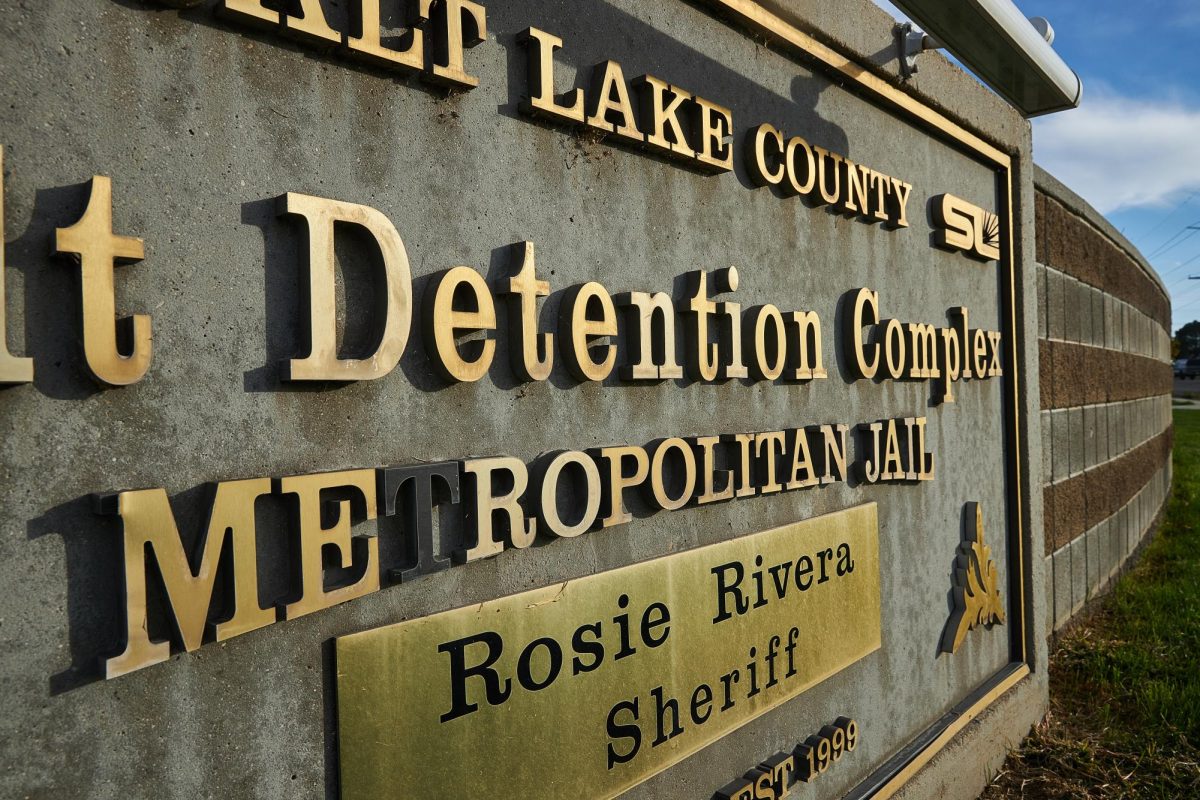Understanding Seasonal Depression as it Looms throughout Winter Months
Snowfall at the downtown Salt Lake City on a Christmas night on Dec. 25, 2018 (Photo by Abu Asib | The Daily Utah Chronicle)
January 30, 2022
As the winter continues, correlated mental health issues are always something to stay aware of. Seasonal affective disorder, more commonly known as seasonal depression, is a form of depression that comes at the same time every year. Most often, it takes place during the fall and winter seasons.
“There’s several theories on why this happens and one of those is the idea that when the days get shorter, and we have more darkness, people tend to get more depressed from that type of experience,” said Jason Hunziker, the adult division chief of the adult psychiatry division at the University of Utah. “This is thought to be related to changes in the amount of light we receive … As that [daylight] gets shorter, the chemicals that we need in the brain to keep us happy and moving forward aren’t getting produced as readily.”
It is estimated that nearly 5% of the U.S. population is affected by seasonal affective disorder. Also, 14% of U.S. adults are affected by milder versions of seasonal affective disorder and other mood disorders, according to U Health.
There are a wide variety of symptoms associated with seasonal affective disorder. These have to include a low mood and/or loss of pleasure or interest in things someone usually enjoys. Other symptoms can include feeling sluggish, having difficulty concentrating, craving unhealthy foods and many others.
For college students, seasonal affective disorder is something to be especially conscious of throughout fall and winter.
“I think the transition out of daylight savings always feels challenging,” said Lauren Weitzman, the director of the University Counseling Center. “I think for college students it overlaps with finals and an already difficult part of the semester. I think it’s always important to be tuned in to when you might be having symptoms of depression.”
The main age group for not only seasonal affective disorder but depression, in general, is 18-35 years old.
“If you think about college-age kids, often this is their first time away from home,” Hunziker said. “They’re in the dorms, they’re trying to figure out how to make that work. They’re in a large university system where it can be quite overwhelming. They’re stressed with homework, they’re stressed with social situations. There’s tons of things going on all the time, and you can get lost in that.”
A common issue among college students is feeling too busy and not setting aside time to address mental health struggles.
“I think people ignore some of the early signs of depression … And of course, [with] stigma, who’s gonna want to tell people?” Hunziker said. “If you’ve gotten in a car accident, you wouldn’t have a hard time talking to anybody about what happened. But when you get depressed, you try to hide that … and all of that’s really common in the college-age group because there’s just so much stress.”
Treatments for seasonal affective disorder are unique, at least relative to other forms of depression. Among these treatments is light therapy.
“Light therapy is something that can really help people with this type of depression … Basically, there’s a special light box that people have and it helps them be exposed to bright light right when they wake up,” Weitzman said.
Light therapy is far from the only treatment for seasonal affective disorder. There are much simpler things to try and fight it.
“There are several things that people try if they know it’s a seasonal depression,” Hunziker said. “They can do things like getting outside even during the wintertime … there’s some literature that talks about spending 120 minutes a week outside so that you can try to give yourself the opportunity to get that sunlight you need to help yourself feel better.”
Other ways to fight seasonal affective disorder include exercise, face-to-face social interaction, eating well and limiting or avoiding alcohol.
For students struggling with seasonal affective disorder or other forms of mental health issues, there are resources on campus available to help, including the counseling center.









John Hedberg • Jan 31, 2022 at 1:24 pm
Dear Good Folks,
This article hits me at home, and it’s got answers that have worked well for me, and still do!
I went down to Walmart and got a couple of 6 foot lamps, the kind which point at the ceiling. I think they were ten bucks each. Then I zipped down 300 West to Home Depot, where they have LED bulbs which put out enormous comparative wattage at very small power levels. You can buy bulbs that specifically mirror lightwaves in sunlight, so I bought one each of 2 different producers: the spectrum is slightly different for each company, so getting 2 different spectrums insures the widest spectrum of pseudo-sunlight reflected off my ceiling.
I put both lamps behind and above my desk/computer, and whenever I’m in the room, I keep them both on. Since they’re LED, the power requirements are really low, and the bulbs are manufactured to last for decades, which is why they cost a little more. I’ve found it to be worth it!
Seasonal Affective Disorder doesn’t seem to touch me much now.
Most people stop exercising outdoors as regularly when it gets cold, and exercise not only produces endorphins (natural painkillers in the brain), but it positively affects other brain chemistry as well: regular exercise is a HUGE mitigating tool against sadness and depression.
The government health gurus recommend a minimum 150 minutes of cardio per week (300 is better), and minimum 2 strength workouts per week of all major muscle groups. This not only avoids brain blues, but helps maintain better sleep and breathing, and strength training helps preserve bone density, which becomes very important as we stick around longer. In the past, I’ve tried cardio Mondays, Wednesdays, and Fridays, while doing strength training Tuesdays, Thursdays, and Saturdays during the Winter. There are a lot of good ways to do it, all of them “right” if they’re right for you.
I’m a big fan of verbal and physical interaction, too. Conversation, concerts, dances, dinners (no alcohol), walks in the neighborhood or hills, plus a little hand holding and gentle affection can go a long way, too, to making a person feel human and relaxed and appreciated.
I just need to remember to follow my own advice! 😄
Good article! Thank you for the great information!
Best Regards,
J Hedberg